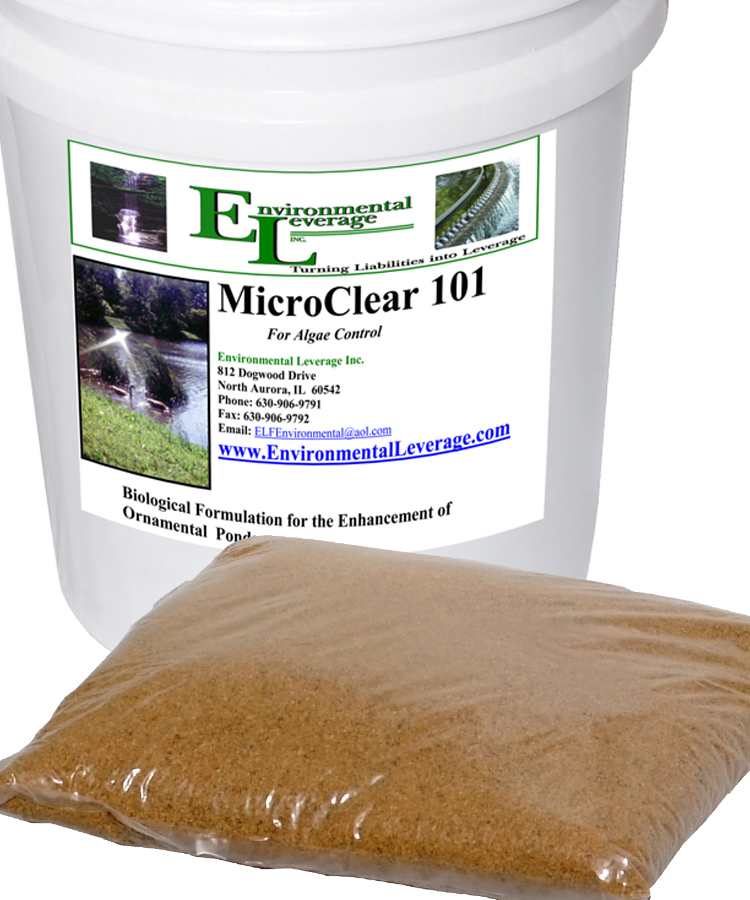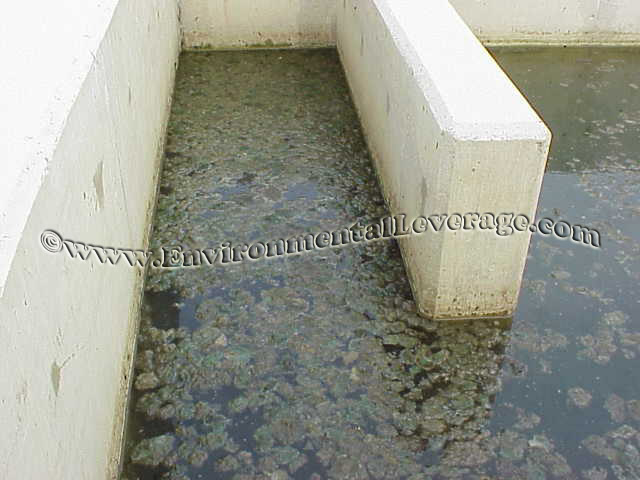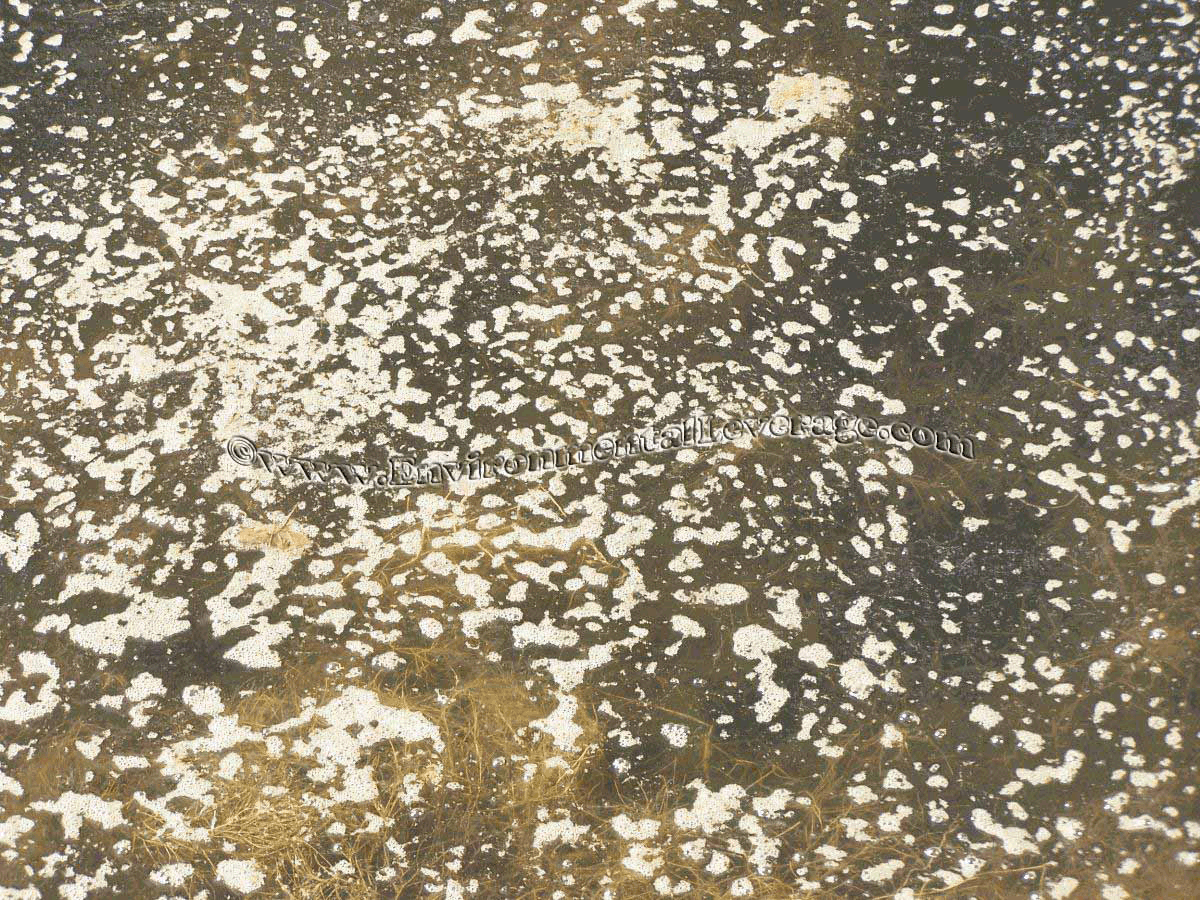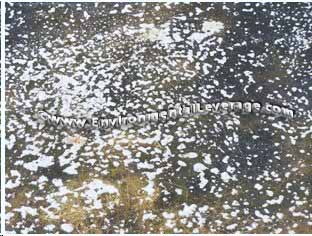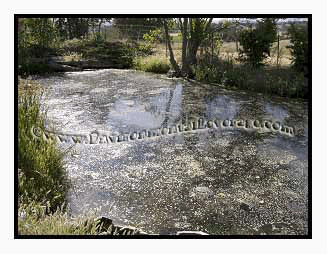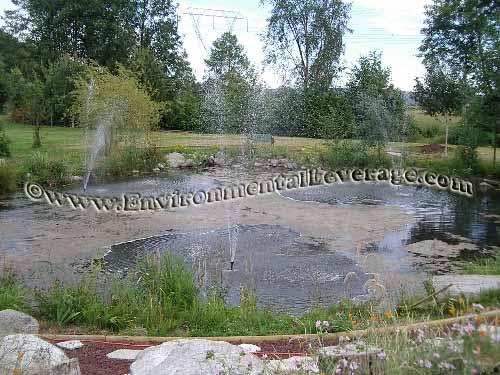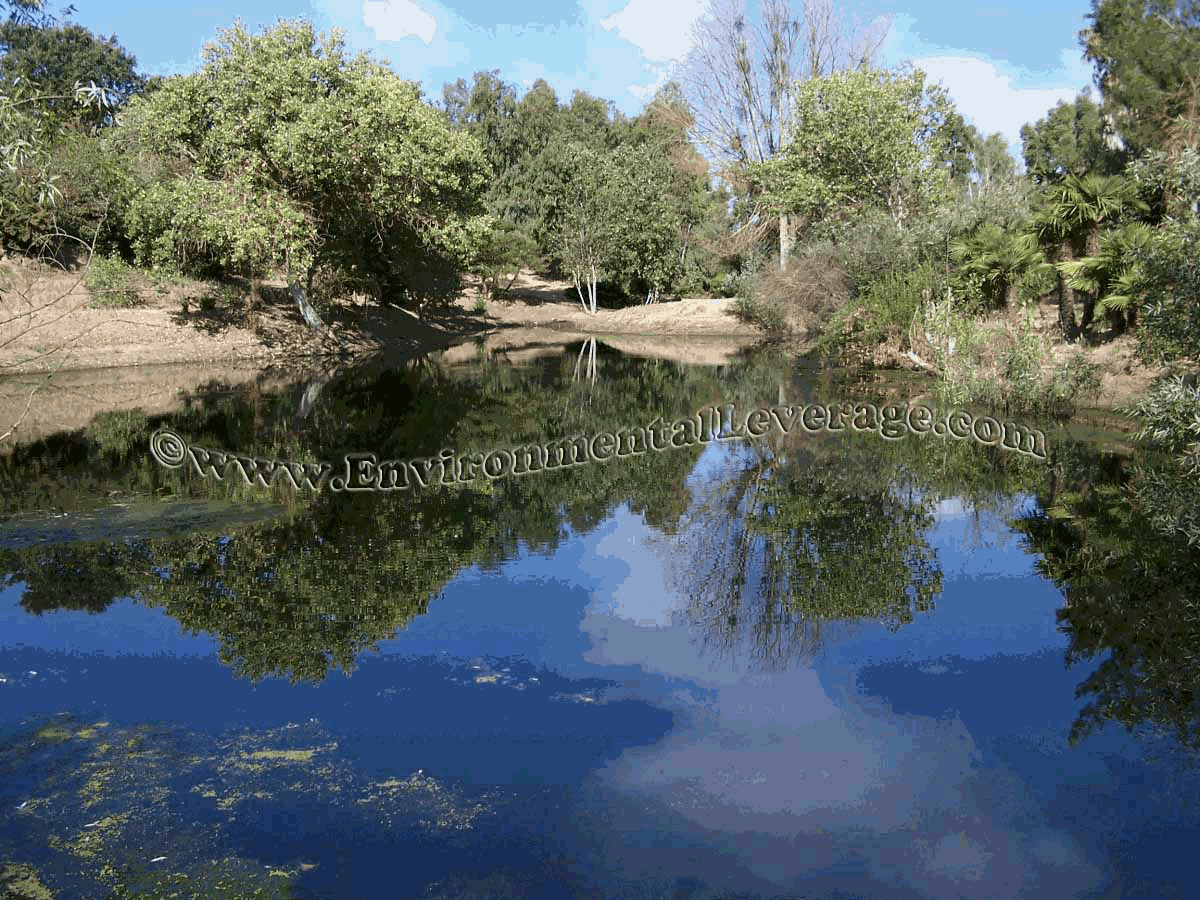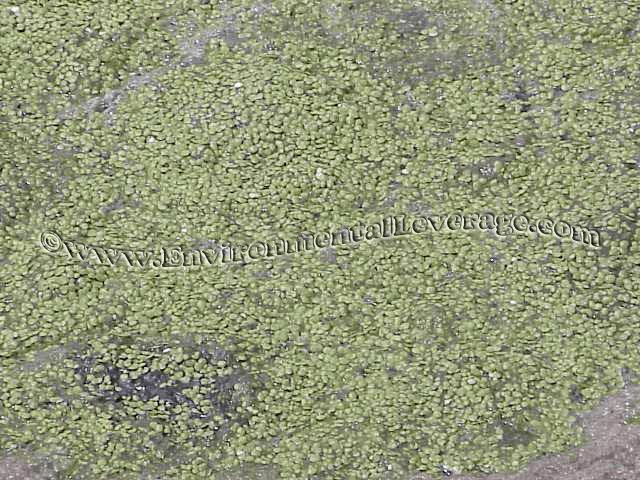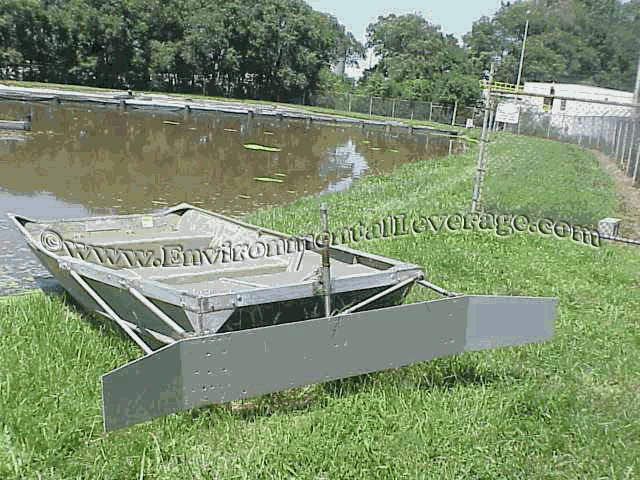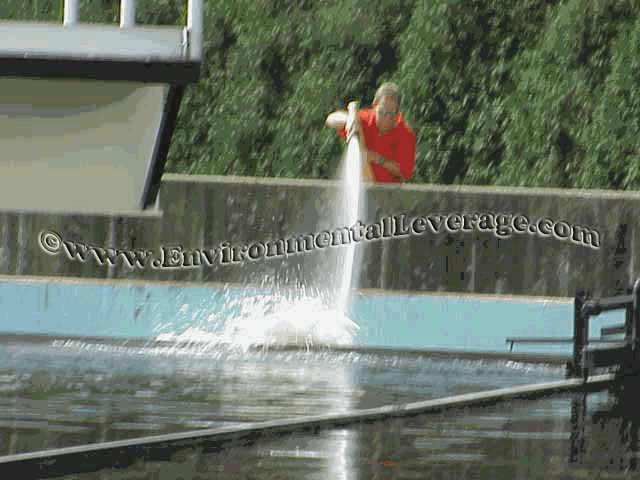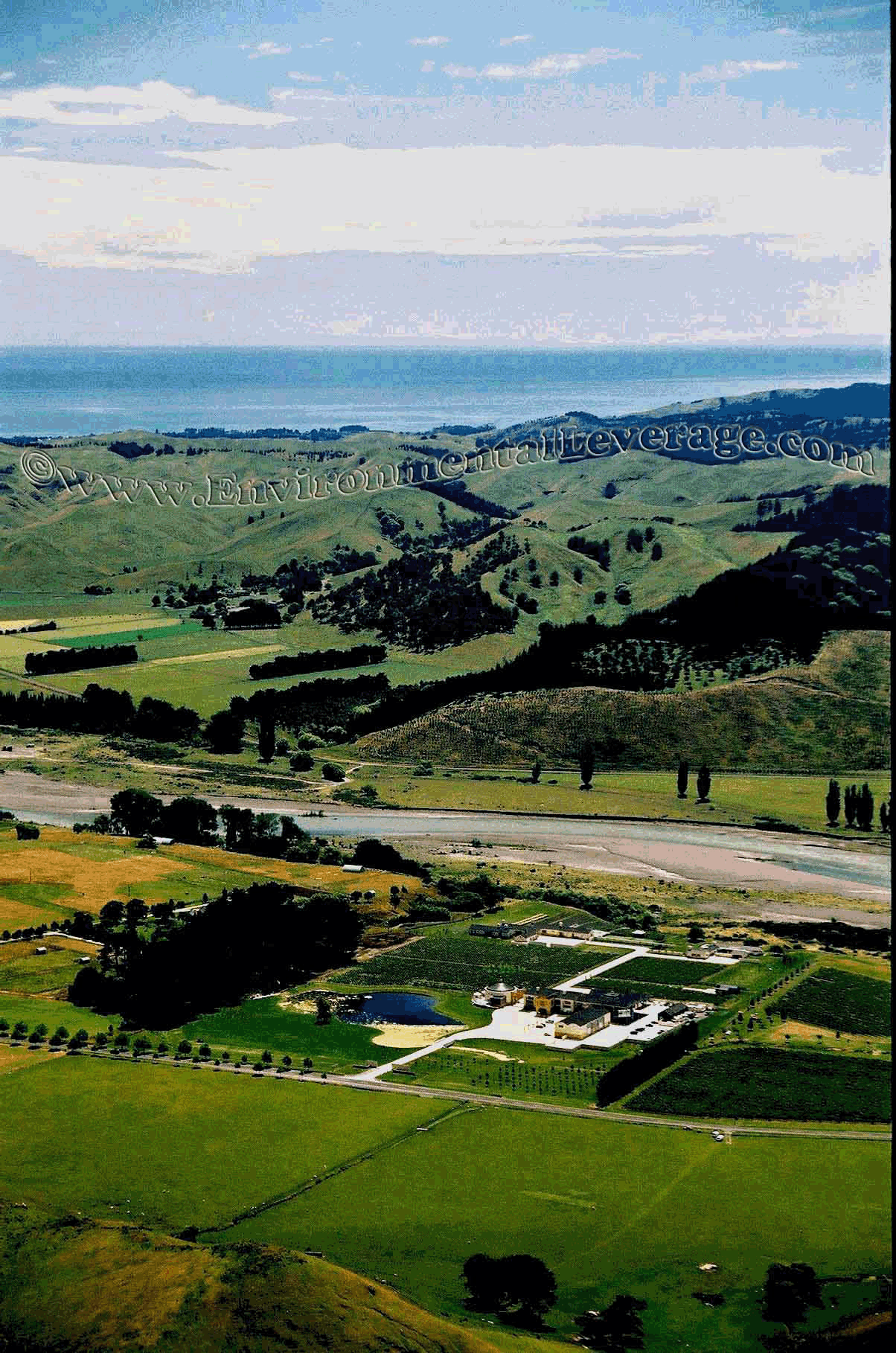Biological Products:
Bioaugmentation products for Wastewater applications in Papermills, Refineries, Chemical, Tanneries, Municipalities, Textiles, Steel, Agriculture, Animal feedlot, Gun Powder plant, Food and Beverage- Dairy Products, Orange Juice factory, Wineries, Cookie factory, Vegetable processing plant, Meat packing, Barbecue Restaurant, Aquaculture, Ornamental Ponds with algae , CAFO, Nursing homes, Military, Campgrounds, Universities, Regulatory agencies, River and Lake remediation
Lab Services:
Filamentous Identification Lab Service. One reason to identify filaments is to determine the filaments characteristics and then determine the type present. If the type is found out, a root cause can usually be associated with a particular filament. If the cause is known, then a correction can be made to alleviate problems. Chlorination is only a quick fix. Without process changes, filaments will grow back after chlorination. Wastewater Biomass Analyses and Cooling Tower Analyses also available
Training Materials:
Training is an integral part of any job. Not everyone is at the same level of training. Many people want beginning concepts and basics. Some need technical information or troubleshooting. Some want equipment, technology or process information. We have developed a full set of Basic training, Advanced training, Filamentous Identification the Easy Way as well as custom training CD's Manuals. We also provide hands-on training classes and soon will have an Online "E-University".
Audits and Consulting:
At Environmental Leverage® Inc., we have a team of experienced individuals who come into your plant with a fresh pair of eyes. The system is checked from influent to effluent. System optimization, equipment efficiency and operational excellence are key components explored. Key Benefits Equipment efficiency Total Cost of Operation reductions Reliability and safety An onsite audit is conducted to examine system parameters, process controls, and current monitor and control procedures. A physical walk-through is conducted, process flow diagrams are examined, previous design criteria are examined and current standard operating procedures are evaluated along with data logs.
|
Algae Control & Troubleshooting - Algae Problems, Solutions & ControlLatest News!
What's New!
We have just added "Virtual Audits" to our capabilities. Check out our new Services. We are in the process of developing new courses for our ""Online E-University" in order to meet the needs of our global customers that cannot travel to our public classes.Visit our new website www.WastewaterElearning.com/Elearning
With
the summer months in progress and high temperatures on the rise, many
locations are having problems with algae and duckweed growth.
Learn how to Naturally control Algae and some proper solutions:
Bacteria can be used to clean the water which may help clean up water overgrown with algae and is safe and effective towards an environmental friendly algae solution The use of non-toxic, environmentally friendly biological products like MicroClear® 101 in lakes and ponds has become very popular recently to help clean up water overgrown with algae, because it is natural and involves no use of herbicides or algaecides. Bacteria reduce nutrients and carbon and clean up the water. If the proper environmental conditions are there, bacteria can grow quicker and more efficiently. The pond is cleaner and no toxic chemicals or residuals result. Bacteria are then added on a maintenance dosage to keep the water clean and clear. Soft, natural solutions for controlling unsightly and help meeting permits.
Blue-green algae, red algae, yellow and brown colored algae in many ponds and lagoons has been more widespread than in previous years due to higher temperatures and less oxygen transfer in ponds and lagoons, lowered rainfall, and runoff interference.
Algae or tetrads growing in any aerated lagoon
systems, ponds or wastewater treatment plants can increase both the TSS and
the CBOD5 of the effluent. This can cause false high BOD and TSS
levels in final effluent permits. Excess algae can also create nuisance
surface scum, poor water clarity, and noxious odors. If the algae makes its
way into the drinking water source, it also can impact taste.
Algae Control AND Solutions for Wastewater systems: Algae production is many times correlated to the levels and ratios of excess nitrogen (N) and phosphorous (P) in the water. Generally, a phosphate concentration of 0.01 mg./l will support plankton, while concentrations of 0.03 to 0.1 mg./l phosphate or higher will likely trigger algae blooms (USEPA, 1986; Dunne and Leopold, 1978).
Not all algae are alike though. Many times the algae or cyanobacteria and tetrads that grow in wastewater ponds and lagoons are often times due to an excess of BOD instead of excess nutrient levels. We have worked with papermills that actually are limited by nutrients, most often Nitrogen. This impacts the floc forming bacteria. Tetrads and cyanobacteria can fix nitrogen from the sunlight, so they will then overtake the lagoons and cause serious TSS problems. Addition of nitrogen to these lagoons based upon BOD loading made the problems disappear quickly. Normal floc forming bacteria can then grow, consume excess BOD and out-compete and starve out the algae and tetrads in wastewater treatment systems.
ORNAMENTAL LAKES, PONDS AND RIVERS Algae are a source of food and energy for fish and other lake organisms and a vital part of all lakes. How do you balance too much or too little? Too much algae or the wrong type of nuisance algae, however, can interfere with lake uses by clogging the filters in water treatment plants, inhibiting the growth of other plants by clouding the water so that it shades them or out-competes with natural plant life. As the natural plant life then decays--more oxygen depletion occurs and fish kills increase. Some species of algae can also release toxins.
Excess algae can interfere with the simple pleasure of looking at a lake for its beauty. Unsightly scum is usually caused either by tangled masses of filamentous algae or by "blooms" of certain planktonic algae that float on the lake surface forming scum. The regular occurrence of visible algae blooms often indicates that nutrient levels, especially phosphorus, are too high. Excess Carbon and nitrogen can also cause some specied to grow.
Excessive plant growth can physically prevent mixing of oxygen through the water, plant die off can occur and fish kills can occur also with too much algae.
Cyanobacteria, better known as blue-green algae are often responsible for
these phenomena.
Algae is not always bad. Algae have been used to provide food for people and livestock, to serve as thickening agents in ice cream or shampoo, and can be used as drugs to ward off diseases. More than 150 species of algae are commercially important food sources, and over $2 billion of seaweed is consumed annually by humans, specifically in Japan.
Seaweed and kelp also are applied to soils as a fertilizer and soil conditioner, as their high concentrations of potassium and trace elements and micronutrients improve crop production, animal feed lots add them as a vitamin supplement, wastewater treatment plants add them as a micronutrient source for the bacteria.
Ponds at a tree farm in California where bioaugmentation was used to control
water pollution.
Wetlands at a Gunpowder plant were bioaugmentation solutions were used to
controlpollution.
So, how do you determine what type of algae or cyanobacteria you have? Is it blue-green algae or one of the more common types?More importantly what is causing it and how do you control Algae and implement solutions to control the Algae?
Testing of the pond, river, lake or lagoon parameters can narrow down the cause. Microscopic analyses can narrow down whether it is algae or cyanobacteria. Duckweed can be visually identified.
Factors that influence growth of algae to help in algae control: Mixing, aeration, sunlight, CO2, nutrients, excess BOD are all factors in algae growth in ponds, lagoons and wastewater treatment plants. Retention time is an influential factor controlling algal growth. As photosynthetic organisms, algae require light to grow, so sunlight and depth of the lagoons or ponds are also a factor.
Excess BOD can be a main component since the carbon often is a food source for some of the cyanobacteria and algae that grow. Run- off from animals, pollution, leaves and plants decomposing are some of the sources of BOD. In industrial facility wastewater ponds, high BOD comes from the process side. A simple COD/BOD or TOC can tell if this is causing your problems. If BOD is over 5-10 ppm, then more than likely high BOD is the cause for some of the problems. If you have a treatment pond, or aeration basin, increase MLSS in order to consume any excess BOD.
Duckweed is relatively large and can be visually identified. It can
grow in ponds, clarifiers, lakes, rivers, etc.
Nutrients: Phosphorus and nitrogen
In most lakes, phosphorus is the least available nutrient; so its abundance--or scarcity--controls the extent of algae growth. If more phosphorus is added to the lake from sewage treatment plants, urban or farmland runoff, lawn or garden fertilizers, septic tanks or other watershed or outside resources, or even if it is released from phosphorus-rich lake bottom sediments from plant die-off, more algae will grow. A simple test can be performed to measure the phosphorus concentration or nitrogen levels to determine if this is your problem in your lagoon. Another important parameter to check also should be pH.
Dissolved oxygen is critical in ponds and lagoons. Available oxygen is
consumed through decomposition of plant and animal material. Oxygen transfer
is also lower with higher temperatures. Drop a D.O. probe into the lagoon or
pond and measure the Dissolved air.
Low Rainfall and high temperatures are often times a contributor to increased algae in ponds. Rain can tend to be a good dilution factor for pollutants. If there is no rain and high temperatures and high levels of evaporation, what normally is not considered polluted or high BOD becomes more concentrated and thereby, increases chances for algae growth.
Animal droppings from birds, geese, ducks etc can impact nutrient levels and increase growth of algae.
Cold lime softening- even equipment inside buildings that have windows or lights- algae can grow on surfaces if excess nutrients are present
Algae build up in clarifier weirs can cause short circuiting, or even carryover into the final effluent and give false BOD results.
Solutions for Algae Control-Traditional solutions
· Herbicides and Algaecides, Copper Sulfate and Bleach are traditional chemical methods that have been used in the past. · Fountains and Aeration help increase mixing
and aeration and increase normal biological activity, thereby lessening the
chance for algae to grow.
· Mechanical cutting and removal of aquatic weeds or harvesting of duckweed is common, but are high on manpower costs · Mechanical spraying or brushing of clarifiers, weirs and surface areas will significantly help with treatment plants and algae removal · Weir covers on clarifiers are now being used as opposed to full clarifier covers · Physical covers of clarifiers
Aeration and mixing are required too. · Surface growing plants such as
duckweed can provide natural cover. Duckweed, if kept from the effluent
by inserting surface baffles in front of the effluent weir, is very
effective toward reducing algae in the lagoon. It is a high maintenance
solution though and not used very often. Water Hyacinths also help
with BOD reduction.
Algae Control & Solutions:
Papermill lagoon and Winery lagoon where bioaugmentation was used to control algae - photos prior to bioaugmentation
Click this link for information on: Bioaugmenation in Rivers and Lakes to control algae.
Call Environmental Leverage® today to learn more about an Algae control program! Call 630-906-9791 or email us at: admin@EnvironmentalLeverage.com MicroClear®101 for Algae Control and Solutions Microscopic analyses of your system for Algae control and solutions More Troubleshooting Algae in various parts of a treatment plant Algae in Ornamental or small ponds Algae Removal- Bioaugmentation Algae in Various parts of the Plant Mystery bug of the Month- Algae Salton Sea Free swimming ciliates
|

